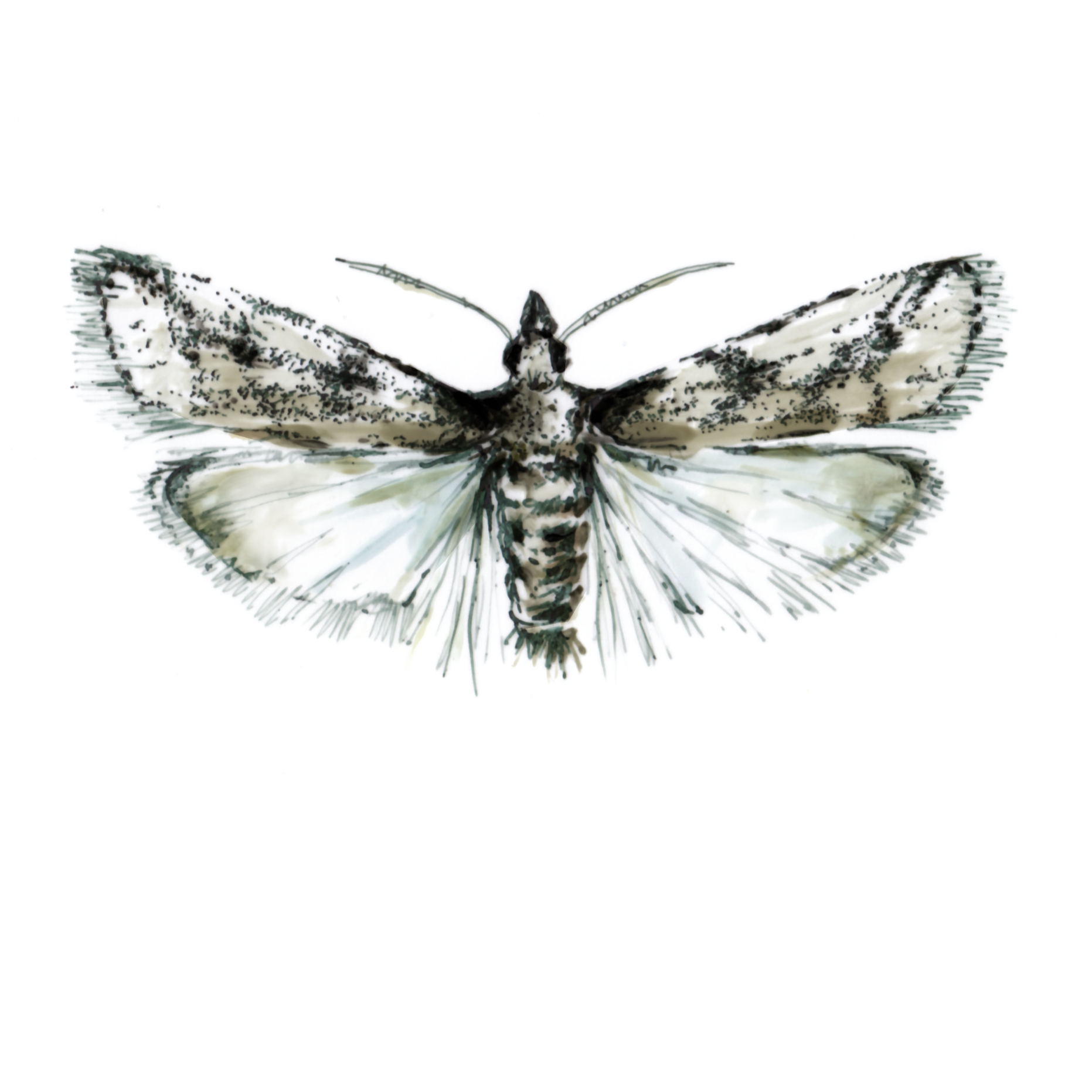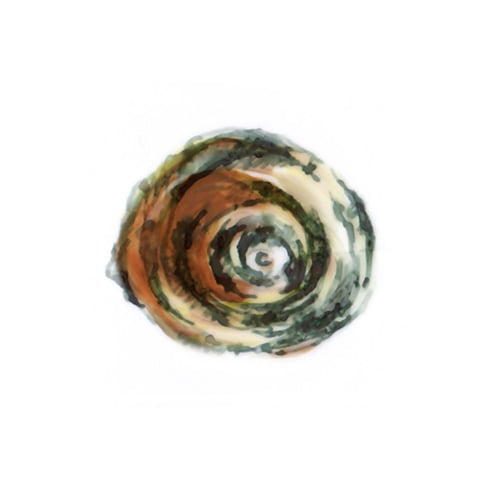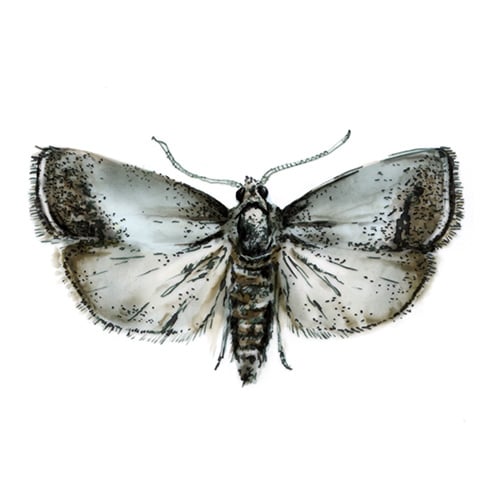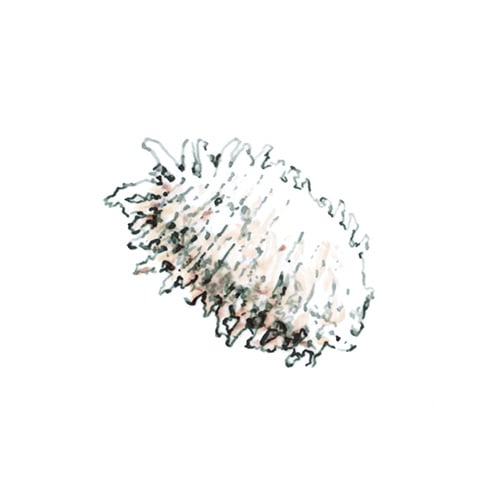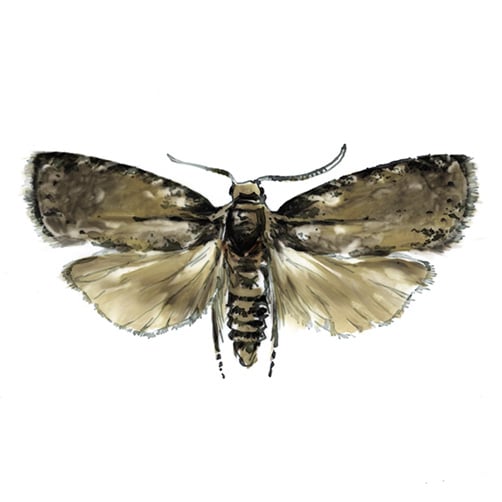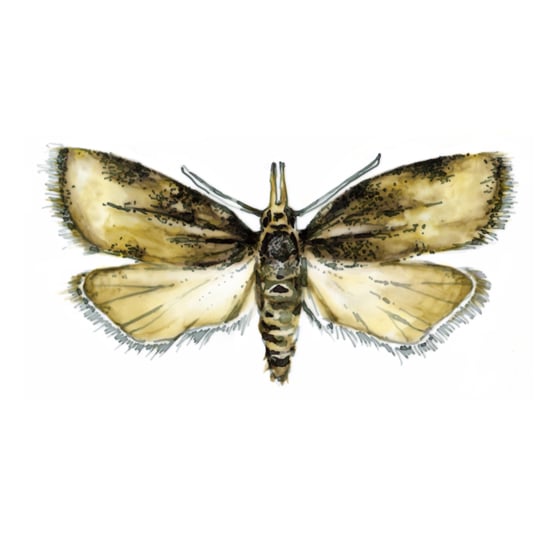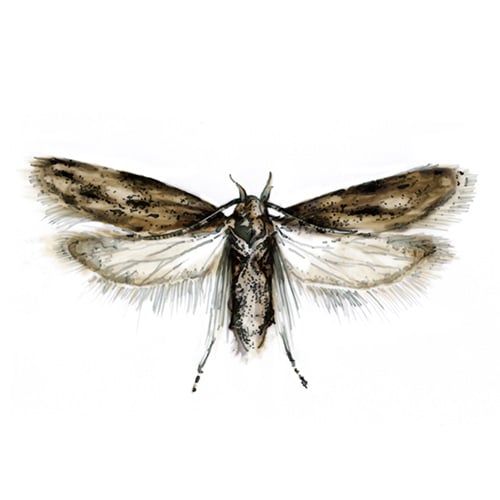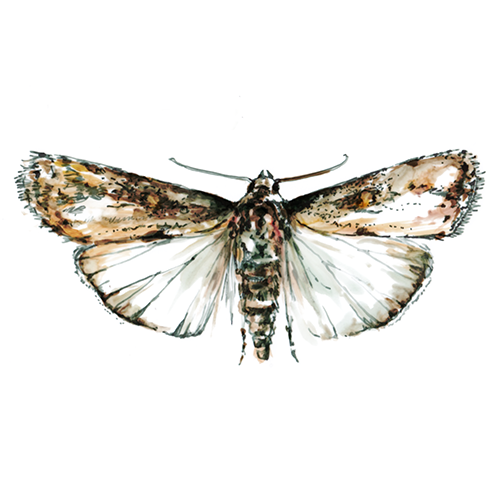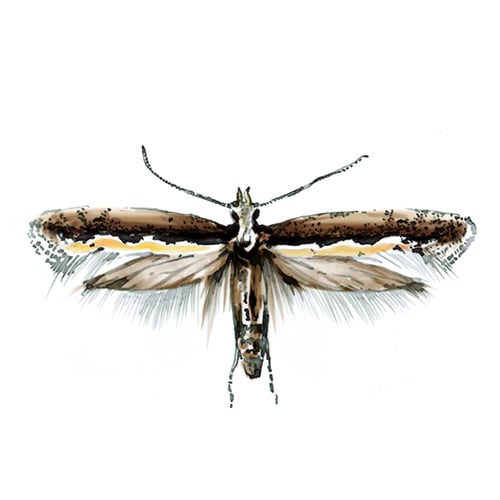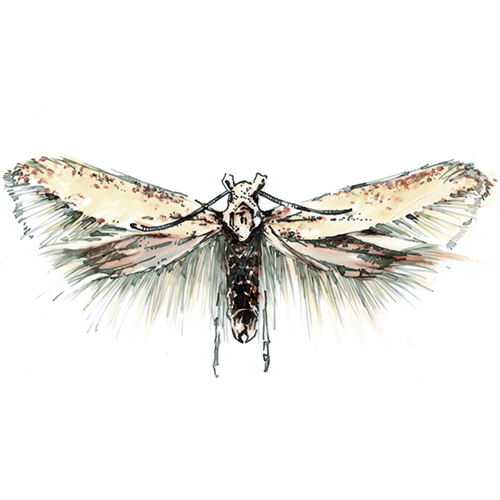What is Mating Disruption?
Suterra products (CheckMate® and Puffer®) work by mating disruption. When female insects are sexually mature, they produce a unique chemical signal called a pheromone that allows males to find them and mate, even from long distances away. Suterra’s products perfectly replicate this signal, allowing growers to diffuse the pheromone throughout their orchards, vineyards or fields.
The added pheromone in the air essentially ‘blinds’ males individuals to the location of females in the area. The goal of mating disruption is to reduce mating and lower the overall pest population over time.
WITH
Mating Disruption
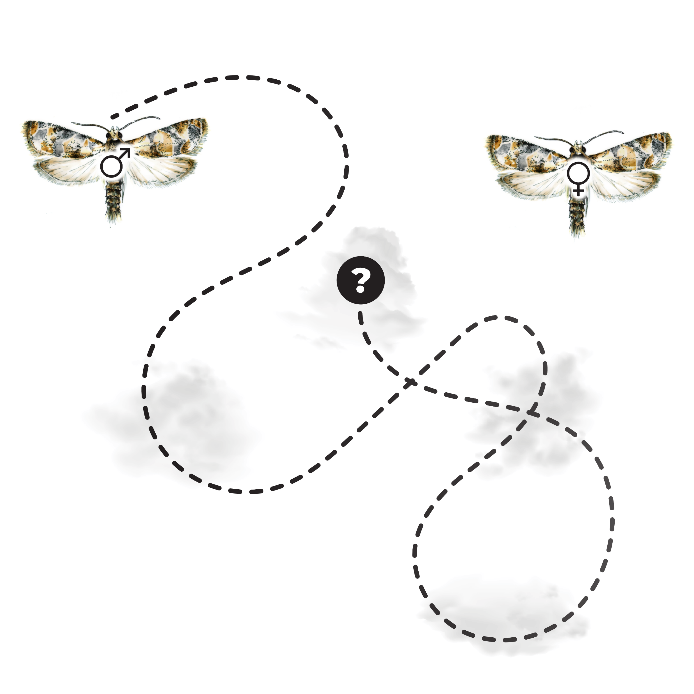
WITHOUT
Mating Disruption
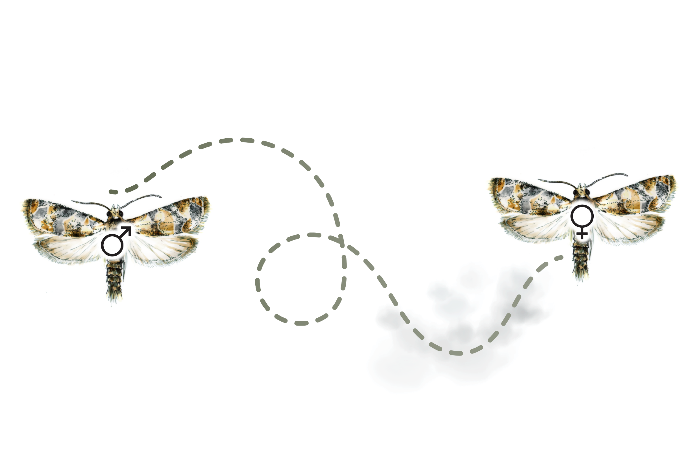
Males follow pheromone trails to locate females for mating
Our products disperse species-specific pheromone
Dispersion of female sex pheromone confuses males
Males are unable to pinpoint locations of females, reducing mating
No Mating = No Offspring
Reduced Pest Population
Value of Suterra's Products
Mating Disruption Works
Mating disruption reduces the ability of the target pests to multiply generation after generation. Fewer damaging insects mean a healthier crop with more marketable yield.
Delays Insecticide Resistance
Mating disruption stretches the useful life of conventional insecticides by making it harder for individuals that survive to reproduce. The target pest remains susceptible to those active ingredients for many more generations.
Safe for Beneficial Insects
There is no substance more selective than sex pheromones. Only the males of the target pest are affected, making our products completely safe to beneficial insects such as pollinators and natural enemies.
IPM Compatible
Suterra’s mating disruption products are compatible with integrated pest management tools such as conventional insecticides, natural enemies, sanitation, and other cultural practices.
Residue Free
Pheromones themselves are naturally occurring substances that have been designed by nature to quickly fade away. Our products have no maximum residue limits (MRLs) unlike conventional insecticides.
Low Risk to Workers
Because pheromones are naturally occurring and species-specific, they are non-toxic and safe for workers. Our products have no or very minimal re-entry interval and zero pre-harvest interval (PHI).
Suterra's Mating Disruption Solutions
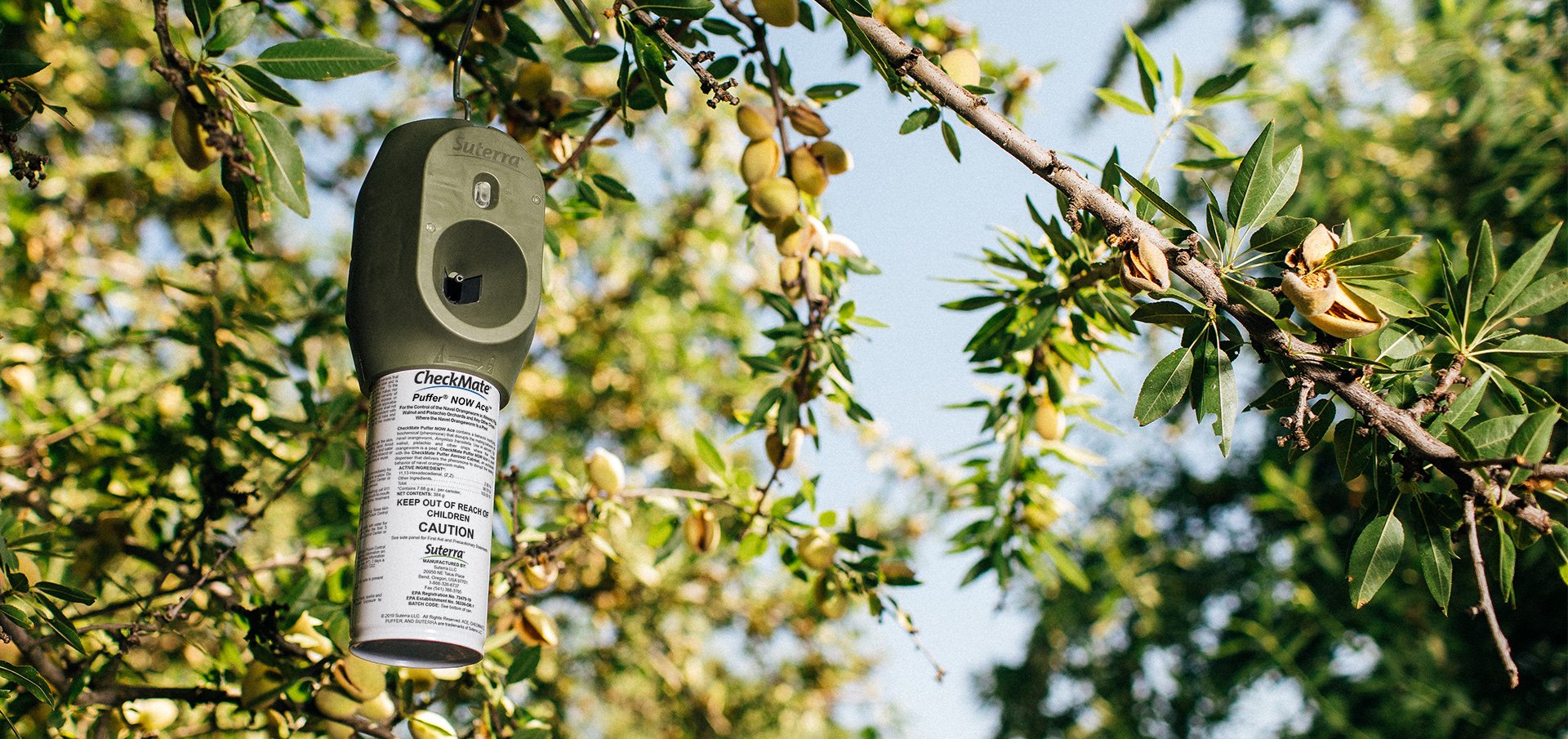
Puffer®
Automation | Duration
Suterra invented and perfected aerosol mating disruption. Puffer® products deliver a consistent release of pheromone assuring effective mating disruption all season long, regardless of weather conditions. Dispensed by electronic-controlled cabinets that include:
- Includes reliable batteries with heat shield material developed by NASA
- Dust and waterproof
- Pre-programmed for time zone and pest
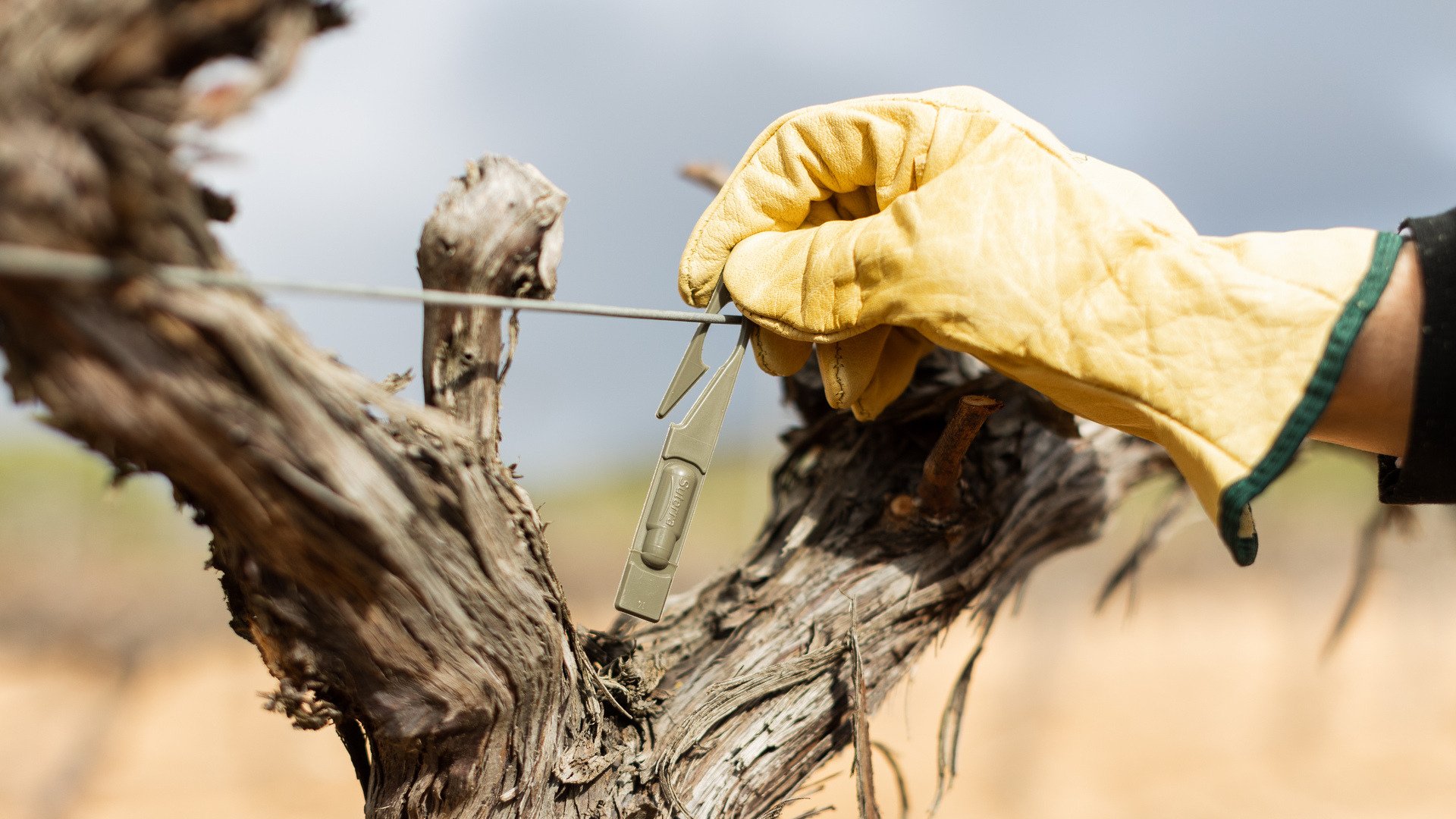
Celada™
Diffusion | Simplicity
Celada ensures ease of use with an integrated hook designed to withstand all harvest operations and provide attachment flexibility. The resin properties interact with the pheromone at a molecular level, precisely controlling the release rate for consistent and reliable dispersion throughout the season.
- Innovative resin properties precisely control the release rate
- Durable, polymer dispensers
- Easy, ergonomic deployment

Sprayable
Microencapsulation | Flexibility
Targeted applications of microencapsulated pheromone allow growers to introduce mating disruption as part of their standard spray program. Designed to be tank-mix compatible with most commonly used agrochemicals, our sprayable formulations offer the most flexibility for timing and budget.
- Long-acting sprayable product
- Apply at low volumes and higher speeds
- Zero pre-harvest interval and minimal re-entry interval
The pests we help control
While Suterra’s approach may feel new to some, growers have effectively used mating disruption on a variety of agricultural pests for several decades. Suterra offers products for several key pests, including but not limited to vine mealybug, California red scale, and a variety of lepidopteran pests like codling moth, navel orangeworm, and others. Suterra is constantly expanding its range of products and target pests, offering products across a wide range of crops and locations around the world.
Suterra products foster grower/pollinator relationships
Suterra’s products are a fantastic option for growers using beneficial insects as an asset to their crops. The products mimic the highly specific sex pheromones of target pests to reduce mating and overall populations. As a result, the products are species-specific and have no impact on native insects, pollinators, or the pests’ natural enemies. Pheromone products leave zero residue and they naturally degrade once released, relieving growers of the worry about residue getting in their plant’s systems- or the systems of visiting pollinators. By putting a greater focus on pest management methods that only affect target species, growing activities are more sustainable and help protect these important species.
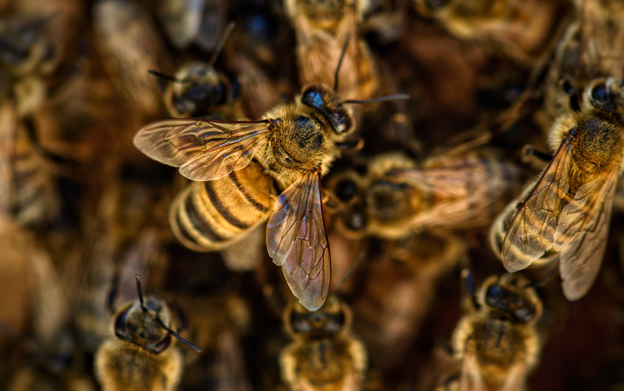
The History of Mating Disruption
Mating disruption is a unique mode of action for pest management that uses species-specific pheromones to reduce target insect populations over time. The quest to identify and understand how insects use pheromones has been going on for decades. Learn more about the history of mating disruption and Integrated Pest Management in this article.


1870's
An experiment conducted by Jean-Henri Fabre in the 1870s, male peacock moths were attracted to and able to find females regardless of where he put them, leading him to conclude that the moths were finding each other with an odor undetectable to the human nose.
1959
The first successful isolation and identification of an insect pheromone was bombykol, the female sex pheromone of the domestic silk moth. This kicked off the lengthy research process of identifying the sex pheromones of other insects.
1967
Lyle Gaston and coworkers, first demonstrated that the use of synthetic pheromones could be used to implement mating disruption on cabbage looper moths. This initial experiment was small but proved that mating disruption could work.
1970's
Growers were introduced to pheromones in the 1970s when the first monitoring traps were released. Using the sex pheromone of the female insect, these traps lured males to a sticky sheet where they could then be easily counted.
1980's
Mating disruption jumps from science to industry. Companies like Suterra are born, and the first mating disruption products are sold around the world.
1990's
First large-scale mating disruption adoptions take place. Pioneering and progressive growers begin adopting these products into their standard pest control programs.
1998
Suterra registered the first aerosol in the United States for use against peach twig borer (PTB), a pest most prevalent in stone fruit.
2010
Suterra was the first to develop and achieve a product registration for a non-Lepidoptera product, vine mealybug (VMB).
2014
Suterra finished building what is today the world’s largest chemical facility dedicated exclusively to pheromone production, located in Bend, Oregon.
2022
Mating disruption is adopted on 3+M acres world-wide. Driving sustainability in agriculture and innovation in the field.

Mating Disruption Success Stories
Learn how Suterra products have helped growers achieve their goals by using mating disruption in their crops.
